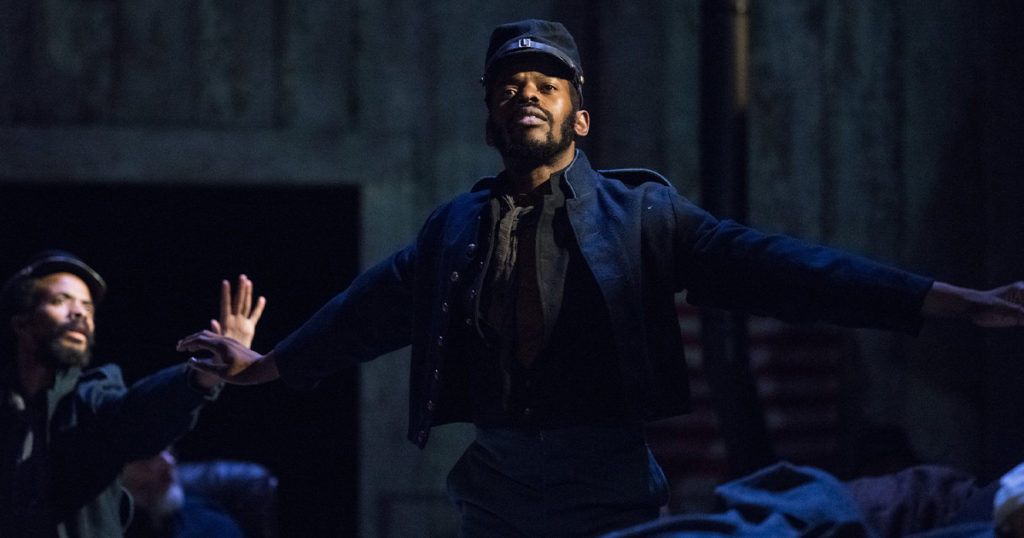
The Impossible Art: Adventures in Opera by Matthew Aucoin; Farrar, Straus and Giroux, 301 pp., $28
Matthew Aucoin happily wrestles with multiple impossibilities in this highly personal book. In vivid, granular detail, he explores composers and operas he loves, from Claudio Monteverdi in 17th-century Italy to contemporary British composers Harrison Birtwistle and Thomas Adès. He also highlights the process of writing two of his own three operas: Crossing, a work about Walt Whitman dating from 2015, and Eurydice, which premiered in February 2020 at the Los Angeles Opera and made its Metropolitan Opera debut this fall. Now 31, Aucoin is one of classical music’s brightest stars—winner of a MacArthur Fellowship, cofounder of the innovative American Modern Opera Company, and a former Solti Conducting Apprentice at the Chicago Symphony Orchestra. He was 23 when the Met asked him to write an opera, starting him on the path to Eurydice.
In The Impossible Art, Aucoin offers “a practitioner’s view of the art form,” and his wide-ranging list of opera’s impossibilities is painfully accurate. In what other medium is the transcendent goal a synthesis of music, theater, dance, poetry, painting, and more? “Is this crazy or what?” Aucoin seems to be asking. But a sense of delight and wry humor also permeates the book. He revels in the sheer joy of figuring out how composers manage to negotiate opera’s immense challenges. Whether analyzing Desdemona’s final lament in Verdi’s Otello (1887) or the way Stravinsky gives unexpected grit to the pious Anne Trulove in The Rake’s Progress (1951), Aucoin’s pleasure is palpable.
Even those who may not know much about music will have no trouble following his minutely detailed musical analyses. Aucoin has the impulses of a master auto mechanic, relishing the act of getting under the hood and pulling the engine apart. Best of all, he wants to pass that knowledge on to us. Eschewing musicological jargon, he conveys his enthusiasm and wonder as he spells out, bar by musical bar, how Monteverdi creates a mood or Mozart manages to touch our hearts in the final scene of The Marriage of Figaro.
Analyzing Monteverdi’s L’Orfeo (1607), he all but makes us hear the sound of the hero’s final aria. “The desolate Orfeo is stuck in the basement of the tenor range,” he writes, “paralytically singing long, dull stretches of low Ds and Es. (Many tenors have a tough time projecting down there, so it’s not hard for them to sound miserable, as the drama demands.)” This is the best kind of music analysis for general readers—a generous, efficient, noncondescending explanation of how an arrangement of notes on a page creates an atmosphere. Don’t know anything about a tenor’s vocal range? Now you know that low Ds and Es are the bottom. You also learn that one reason they sound so sad is that they’re difficult to sing. This kind of unaffected, openhearted writing is a powerful invitation to enter the world Aucoin loves so dearly. He treasures Monteverdi’s L’Orfeo. No one, he writes, “has done a better job with the Herculean challenge at the heart of the Orpheus myth.” But the two composers approach it from very different angles. Eurydice’s role is “vanishingly brief” in Monteverdi’s opera; for Aucoin, she is the central figure.
The book is organized in chapters devoted to a single work or composer, and in his preface Aucoin invites us to jump around as we like. In some sections he waxes philosophical or confronts the opera world’s structural issues. He isn’t keen, for example, on Wagner’s idea of Gesamtkunstwerk, opera as a total work of art with the composer dominating every element from the music and libretto to the staging. The result, Aucoin says, can become “one big goulash.” Opera’s elements, he says, “should never quite merge, but they should aspire to transform one another through collision.”
Growing up in suburban Boston, Aucoin seldom attended live performances; CDs and scores from his local library were his gateway to opera. He admits that the stuffy rituals of the opera house can be off-putting: forbidding theater buildings, snobby audiences, high-priced tickets, and “venomously picky aficionados.”
“Think of this book,” he writes, “as a portal into your own inner opera house.”
Aucoin doesn’t complain that opera is no longer the mainstream, commercially viable art form it once was. More young composers are writing operas, he writes. The field is overrun with gifted performers, and there’s a new openness to adding diverse stories, voices, and viewpoints. Aucoin devotes an entire chapter to Adès’s The Exterminating Angel (2016), inspired by Luis Buñuel’s 1962 surrealist film. His list of recent American operas with “widely divergent aesthetics” includes “the scalding virtuosity” of Du Yun’s Angel Bone, the “liquidly engulfing voluptuousness” of David Hertzberg’s The Wake World, and Missy Mazzoli’s “disarmingly direct” Breaking the Waves. “I think we’re living through something like a golden age,” Aucoin writes. “Our musical moment … continues to yield wondrous and weird new operas—and opera-like works that resist or refuse the label—with every season.”
Opera may be impossible, but it is infinitely irresistible. l

